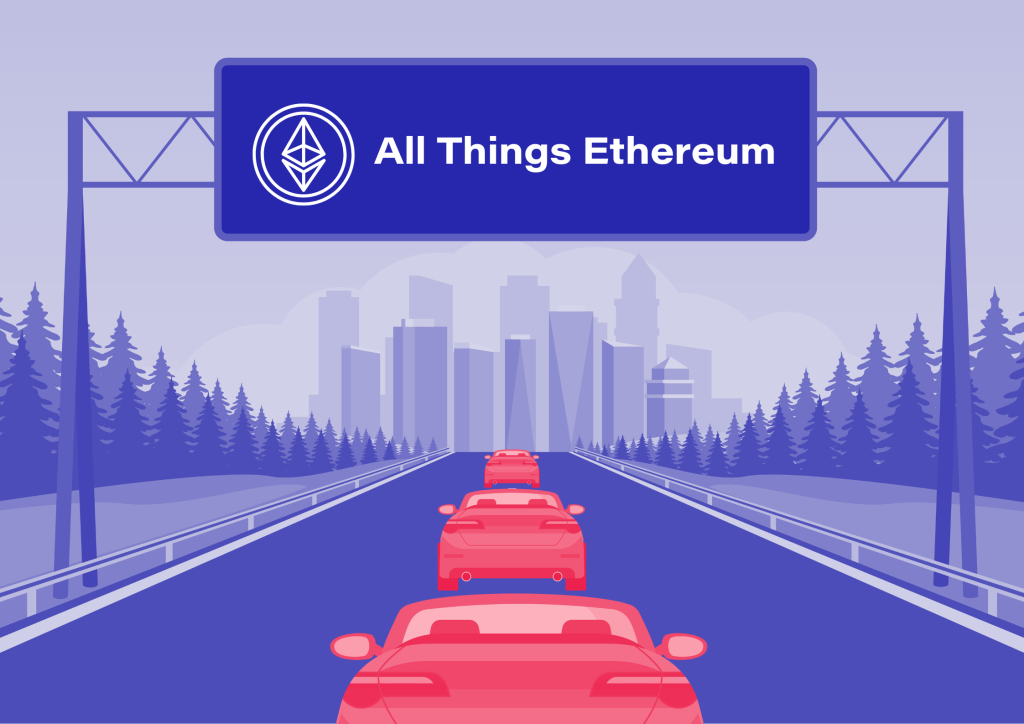
On 23 July 2024, spot Ether exchange-traded funds debuted in the US, opening the gateway for mainstream investors to adopt Ethereum. This milestone coincides with changes in the Ethereum ecosystem’s dynamics, marking an opportune time to explore its growth since 2015, and ways to steer meaningful conversation in the crypto community and beyond. Fret not if you’re new to the space—we’ve got you covered in this article.
What are spot cryptocurrency exchange-traded funds?
A spot cryptocurrency exchange-traded fund (ETF) is a type of investment that gives investors exposure to a digital asset (or group of them) on a stock exchange, without having to directly buy and store the digital assets themselves.
Ether (ETH) is the second cryptocurrency after Bitcoin (BTC) to be approved as an ETF, placing it on the same shelf in the stock market as Microsoft and Apple. This allows traditional financial investors to trade ETH without the tech-savviness usually required. With spot ETH ETFs launching in important financial hubs like the US and Hong Kong, mainstream recognition and acceptance of crypto as a legitimate and valid form of investment has risen.
Layer 1: The Bustling Metropolis
Aside from increased mainstream adoption, Ethereum has also undergone substantial infrastructural overhauls. To understand them, it would be useful to imagine Ethereum as a bustling metropolis. Layer 1 (L1) is the foundational layer on which all other actions are executed. Similar to a city’s main roads and public transportation systems, they handle all transactions and maintain established agreements between users. The Layer 1 (also known as ‘mainnet’), enables functions like building decentralised apps (DApps), making them fully operational and open to all.
Layer 2: The Suburbs
As the metropolis grew, its roads and transportation systems became congested. With all the activity concentrated on L1, its infrastructure began to experience heavy burden, incurring high transaction costs and long wait times.
This is where Layer 2s (L2) swoop in: To lessen the load on L1, these secondary blockchain systems divert the traffic by branching off from the initial layer. L2’s offer a faster and more cost-effective solution by executing a large number of transactions and sending the results back to L1.In this aspect, L2s function like suburbs at the outskirts of the metropolis.
Recently, L2 solutions have become so successful that substantial user activity has migrated to them. While some worry that reduced user interactions on the L1 would lead to inflated fees, it might be more productive to explore the overall ecosystem’s evolution, and how protocols can better support users through such transitions.
Layer 3s: The Connecting Roads
Many L2 solutions operate in silos, resulting in a fragmented ecosystem due to difficulties in making cross-chain transactions. Layer 3s (L3s) are built on top of L2s to address the low interoperability. They act as common roads and bridges connecting the L2 suburbs.
L3s also enhance the overall scalability and customisation of Ethereum. As specialised chains, they grant developers flexibility in tailoring DApps at lower costs. This is like building a common road that takes into account each suburb’s unique climate and population needs.
Where is Ethereum headed?
Ethereum is preparing for the Pectra upgrade in the coming months, promising greater network connectivity, sustainability, and adoption. By providing clear and accessible information, everyone can participate in these exciting developments!
Stay connected with YAP Global:
Website: https://yapglobal.naturaleyemedia.in/
X: https://x.com/YAPGlobalTeam
Newsletter: The Context


